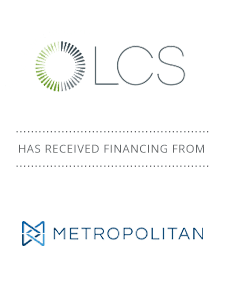Financial Technology and Services
TABLE OF CONTENTS:
- CH. 1: Introduction
- CH. 2: Market Overview & Trends
- CH. 3: Key Players in the Fintech M&A Market
- CH. 4: Recent Deal Flow and Multiples
- CH. 5: Factors that Drive Fintech Business Owners to Pursue an M&A Transaction
- CH. 6: What Buyers Look for in a Fintech Target Business
- CH. 7: What to Consider Before Selling Your Fintech Business
- CH. 8: How to Raise Capital for Your Fintech Business
- CH: 9: Key Considerations for Growing Your Fintech Business Through Acquisition
Chapter 1
Introduction to the Fintech Sector
The use of specialty financial services and financial technology (“fintech”) is exploding among both consumers and businesses. A Fiserv survey found that 78 percent of people under the age of 40 would remain with their traditional bank if it went entirely digital, with 86 percent already using tech-enabled payments. And while B2B fintech has lagged the consumer sector, B2B digital payments alone are expected to create a market of $1.9 trillion by 2028, representing a healthy CAGR of 10.6%, per Galileo Financial Technologies.
If you own a successful fintech business, you might be wondering how the market is trending, whether now is a good time to sell or recapitalize the company, and what you should consider before moving ahead. This guide can help.
In this guide to M&A in the fintech sector, we review the trends that are accelerating financial technology adoption and what investors find attractive about this sector. The guide also reviews recent fintech deal activity, shares who the most active players are, explains what buyers look for in a fintech target business, and outlines what to consider before selling your company. Finally, this guide closes with guidance on how to raise capital for your fintech business and reviews why Forbes is the partner that can assist you in seeking an exceptional outcome when you’re ready to exit your business or raise capital.
78% of people under the age of 40 would remain with their traditional bank if it went entirely digital, with 86% already using tech-enabled payments, according to a Fiserv survey.
Chapter 2
Market Overview & Trends
Per McKinsey & Company, revenue in the fintech sector is expected to grow about 2.5 times faster than traditional banking revenue over the next five years—putting traditional financial services businesses on high alert. There’s incredible demand for apps, software, and other digital technology that simplifies how consumers and businesses access and manage their finances and complete financial transactions. And there’s no shortage of businesses responding to that rapidly growing need, from startups to mature Fortune 1000 companies. Fintech services have become must-have tools for consumers and businesses that are eager to simplify their banking, payments, lending, investment management, and other critical financial tasks.
As fintech companies gain a stronger foothold and their services become viewed as mandatory for consumers and businesses, traditional financial services providers are feeling the pressure. A PwC survey found that over 80 percent of financial institutions feel they’re at risk to innovators, and 82 percent expect to increase their partnerships with fintech companies over the next three to five years.
With so much revenue at stake, it’s little wonder that new fintech entrants are emerging all the time, launching novel technologies and services. That’s created a competitive market that is likely to consolidate as clear winners arise in various fintech sub-sectors. The total sector may be growing, but over time the number of providers will likely shrink as the challenges of keeping up with technology changes, warding off competitors, and maintaining compliance with fast-changing regulations cause some fintech businesses to struggle. For those that rely on debt financing, a high interest rate environment will start to take a toll on profitability.
Historically high interest rates are also weighing heavily on the consumers and businesses that are fintech adopters, driving behavior changes that are likely to necessitate new and different solutions. Analysts expect these pressures to result in short-term market disruptions that eventually fuel new technology offerings and greater demand for fintech, especially across certain subsectors. Generative AI is likely to be part of the solution in the coming years, which will spur both new services and new entrants to the market.
What Are Key FinTech Trends Shaping Deals in 2025?
These market realities have caught the attention of investors seeking to capitalize on the growing fintech market. While overall M&A activity was down in 2022 as compared to the record-breaking year before (due to macroeconomic pressures and market volatility), investors still find this sector attractive. They see the potential for continued innovation to drive new, high-value services that consumers and businesses are willing to pay for. At the same time, they view a rapidly growing and fragmented sector as primed for consolidation through acquisition. While investors may be cautious in the current economic climate, they still view the fintech sector as appealing.
A lower deal volume might actually work to the advantage of strong, well-managed fintechs, since there will be fewer sellers attempting to attract buyer attention. The sheer number and continued growth in fintech companies has investors evaluating target businesses in this sector. One of the key differences in 2023 and beyond will be a heightened focus on and appetite for fintech companies that can show a reliable, defensible path to profitability on a shorter runway than investors might have required before. This trend will play into the hands of fintech businesses that are already profitable or on track to attain that key goal relatively soon.
Ready to Discuss Selling Your Fintech Business?
Chapter 3
Key Players in the Fintech M&A Market
Investors that find the fintech market appealing include a diverse mix of strategic acquirers and private equity (PE) groups.
Many strategics see value in adding niche fintech businesses that broaden their portfolio of offerings, bring novel technologies, support greater growth and scale, and drive efficiencies. The most active strategic acquirers in the fintech space currently include:
-
- Avenu Insights & Analytics, which in the last year acquired payment solutions firm Interware Development Company along with LTAS Technologies, which provides short-term rental identification, monitoring and compliance software and services
- Fortis Payment Systems, which acquired embedded payments provider SmartPay and payment technology company Payment Logistics
- Acturis Group, which recently acquired Broker Buddha, a digital client engagement platform that improves customer loyalty
And of course, one of the blockbuster deals in the fintech space involving a strategic acquirer was Block’s purchase of Afterpay, a buy-now-pay-later firm, which closed in early 2022.
Similarly, PE groups that have deep expertise in and exposure to fintech are always on the lookout for the next potential market disrupter to strengthen their portfolios. Some of the most active financial buyers in this sector include:
-
- LLR Partners, whose past fintech investments included Heartland Payments Systems, one of the largest payments processors in the US, along with TrustEngine, provider of an innovative borrower intelligence platform
- Aquiline Capital Partners, which invested in Fullsteam, a leading provider of integrated business management software and payments
- PSG Equity, which recently invested in Versatile Credit, a provider of software that connects merchants, lenders, and consumers to facilitate point-of-sale loans
Ready to Talk to an Expert?
Chapter 4
Recent Deal Flow and Multiples
While fintech M&A activity trended downward in 2023 due to inflationary pressures, rising interest rates, and difficult macroeconomic conditions, activity has been fairly steady quarter over quarter, with certain subsectors like payments projected to remain especially active. McKinsey notes that B2B fintech businesses have proven more resilient when it comes to M&A, in part because these companies are poised to help overcome known challenges associated with legacy financial systems. However, SaaS fintech businesses are seeing some funding pressure and trading at lower multiples than in recent years, consistent with the overall SaaS market.
Strong valuations in this sector can likely be attributed to the growing scarcity of quality target companies, making both strategic and financial buyers more selective as they continue to focus on profitable businesses with strong earnings and recurring revenue.
Fintech business owners who are contemplating a sale will certainly want to know what kind of valuation multiple to expect. Every deal is unique, so there are no hard-and-fast rules that apply across the entire fintech landscape. However, multiples for public fintech companies averaged 12.6x-13x in 2023, while multiples within the payments subsector averaged 7.6x during that period.
Chapter 5
Factors that Drive Fintech Business Owners to Pursue an M&A Transaction
Though every owner’s situation is different, fintech business owners that consider selling the company often do so for common reasons.
-
- In an increasingly competitive market, many are in search of financing to fund important strategic initiatives that will keep them a step ahead.
- Other times, they have ambitious growth goals and believe that M&A can help them to scale faster and more effectively than solely relying on organic growth.
- Those that are on a fast growth track might encounter challenges in managing a company that has scaled far beyond their expectations. In turn, they will seek a buyer that has the experience and expertise to infuse the company with mature operational and leadership capabilities.
- Hiring the necessary staff can be difficult in a tight labor market, especially for early-stage companies that candidates might view as a riskier option. Owners that feel the pressure of labor constraints might seek a buyer to help build out their staffing.
- Many high-tech business founders tend to be highly entrepreneurial and may simply want to sell the business to gain the capital to fund a new venture.
Chapter 6
What Buyers Look for in a Fintech Target Business
When strategic acquirers or PE groups seek a target business in the fintech sector, they tend to rank the following as highly desirable characteristics.
-
- Ability to generate positive cash flow. Gone are the days when a fintech business simply needed to demonstrate it had a desirable product and sufficient market demand. In these challenging economic times, investors are leaning toward fintech companies that are already generating positive cash flow or nearing that milestone, signaling that they won’t need a continual infusion of cash just to cover current operating expenses.
- Shorter path to profitability. Similar to the above concept, fintech businesses that can demonstrate both top-line revenue growth and a shorter runway to profitability (resulting in a lower burn rate) will be more appealing to investors in the current market. The ability to accurately forecast and defend those projections will prove critical when courting buyers.
- A sustainable business model. While investors always seek companies with the potential for strong revenue growth, now they also value companies with a business model with potential for long-term sustainability.
- Novel technologies, including AI. Fintech businesses that can leverage the power and potential of generative AI would do well to highlight those capabilities when going to market. Such technologies might prove a strong differentiator in the short term and eventually become a must-have capability for some types of fintech businesses.
Chapter 7
What to Consider Before Selling Your Fintech Business
If you decide the time is right to sell your fintech business, you want to be sure you’ve taken every measure to position your company for the best possible sale outcome. As you think about going to market, considerations like the following can help you determine if the time is right to sell and if you’re prepared for the rigors of the sale process.
Mitigate the Most Common Deal Risks
While every M&A deal is unique, there are two risks that commonly derail transactions:
- Customer concentration. If a high percentage of your revenue is generated by just one or a few large customers, buyers will have less confidence in your revenue sustainability and less enthusiasm for the deal. You might need to diversify your customer base to improve your business’s appeal to buyers.
- Keyman risk. If much of your company’s institutional knowledge, skills, and customer relationships depend on just a few staff members, and they leave the company, the stability of the business could be at risk. Buyers expect you to have employment agreements and financial incentives that create greater continuity by locking up key talent and reducing the odds they’ll leave soon after the deal closes.
Improve the Most Important Metrics
Buyers that target the fintech sector are hyper-focused on certain metrics that are indicative of company performance, including customer retention rate, customer churn rate, and customer lifetime value (the total revenue you’re likely to generate over the course of the customer’s relationship with your company). Showing strong trends in these metrics over multiple quarters and years is critical to attracting buyers’ attention and instilling confidence in the business model.
Shore Up Your Infrastructure
Some fintech companies hit a point where they realize they’ve outgrown their early-stage infrastructure. If you don’t have a solid backbone to support continued growth, buyers will be less attracted to your company. Before going to market, make sure you have the foundation in place to further grow and scale the company, which is what the new buyer will be hoping to do.
Get Your Financials in Order
During due diligence, the buyer will examine and scrutinize your financials thoroughly. To avoid unpleasant surprises that could jeopardize the deal (or reduce the deal value), take the time to ensure your financials are clean, complete, and accurate before you go to market. Buyers that are serious about selling the business also invest in a Quality of Earnings report, which demonstrates their commitment to the deal and helps to keep due diligence moving forward.
Determine When You’d Like to Exit the Business
Your desired timeline for exiting the business will impact the type of buyer you should target and expect to attract.
If you hope to leave the business within less than a year of the deal closing, then a strategic acquirer is your most likely buyer. Strategics tend to be in a better position than a PE group to replace your knowledge and expertise. If you’re willing to stay on longer, either a strategic acquirer or PE group might be interested in the business. PE investors prefer to grow a newly acquired business and sell it again later, so having you stay on board is preferable. In deals like these, you typically roll over a portion of your equity into the new company in exchange for a second payout later when the new owner sells the company again.
Ready to Discuss Selling Your Fintech Business?
Chapter 8
How to Raise Capital for Your Fintech Business
Even if you aren’t ready to be acquired, you might want to explore other liquidity options, such as securing capital to fund more growth or capturing liquidity to diversify your net worth. For many fintech business owners, raising capital is often a steppingstone to eventually selling the company.
Raising capital in the fintech sector can be more complicated than in other industries, involving unique scenarios such as purchasing the business’s loan portfolio, lender financing to cover loans the business is making to its own customers, warehouse loans, securitizations, and other highly structured capital needs. Finding capital for niche fintech companies and novel circumstances requires deep knowledge of these unique structures and the firms that invest in this sector.
At a high level, fintech businesses can choose to obtain debt capital or equity capital, each of which comes with advantages and disadvantages:
Debt capital typically takes the form of bank loans, mezzanine financing, or direct lending. It is typically fast and straightforward to obtain bank financing, but other forms of debt capital can be more nuanced. Most debt capital comes with debt service requirements (principal and interest) that limit cash flow, especially when interest rates are higher than they have been in over a decade. Before raising debt capital, carefully assess your current and forecasted future cash flow to ensure it’s sufficient to service the debt.
The best approach to raising capital for your fintech business will depend on the nature of your operation and goals. If you are pursuing inorganic growth, raising acquisition financing can be an option. A fintech company with physical assets can use them as collateral to obtain debt capital, whereas a fintech company without substantial physical assets might consider cash flow-based lending, in which you borrow against the company’s projected cash flows. If your business is financially sound and your cash flows are strong, cash flow-based lending may be a viable way to borrow to cover short-term needs, such as expanding your staff or beefing up your marketing presence.
Whether you opt for debt or equity, be sure to start the process of lining up your funding early, when your business is financially healthy and your odds of obtaining the optimal rates and terms are high.
Since raising capital is complex, consider hiring an investment banker to serve as your guide toward achieving the best outcome. Your investment banking partner will ask about your capital goals and how you plan to use the funds, then recommend the best capital structure to achieve your objectives, market your fintech business to the right capital sources, and negotiate and finalize the best terms.
The Forbes Guide to Middle Market Capital Formation is an informative and comprehensive resource for business owners that are looking to raise capital.
Chapter 9
Key Considerations for Growing Your Fintech Business Through Acquisition
If you’re not ready to sell and exit your business, and you believe there’s more value to scaling it further before taking it to market, growth by acquisition might be an effective strategy. Depending on the size and lifecycle stage of your company, as well as your long-term goals, an acquisition might accelerate your growth beyond what you could achieve organically. The right target business could open the door to tapping new customer segments, entering new geographic markets, strengthening your technology, or expanding your service offering.
If an acquisition is on your radar, the following considerations can help you identify a good-fit target company:
-
- Focus on businesses that are demonstrating sustainable growth, through strategies such as strengthening their core product before extending too far into new areas; expanding into new, high-potential geographic regions; or retrenching from products or market segments that are proving difficult to serve or have limited growth potential.
- Look for companies that are highly disciplined when it comes to cost management.
- Favor fintech businesses that have a shorter, more readily demonstrated path to profitability.
- Look for signs that the owner is serious about selling the company and not just testing the waters, so you don’t waste time chasing a deal that isn’t likely to close.
How Forbes Partners Can Help
Though overall M&A activity is down in 2023 due to economic pressures, well-managed fintech businesses that fit investors’ current criteria might find it’s a good time to capitalize on the lower volume of sellers and attract the ideal buyer’s attention among a smaller field of competitors.
The investment banking team at Forbes Partners is well-versed in navigating a volatile and dynamic M&A market and understands the trends driving consumers and businesses to adopt financial technology at a rapid pace. We maintain strong relationships with many of the industry’s most active buyers, so we know what they’re looking for in a target company and we have ready access to them as potential buyers for your fintech business.
Drawing on this deep expertise and industry knowledge, following are just a few of the many successful fintech deals our team has completed:
-
- Served as exclusive advisor to BoldLeads.com (an innovative SaaS platform for real estate lead generation) on its sale to Propertybase
- Served as exclusive advisor to The Studio Director (a company with scalable IT assets and payment processing capabilities) on its sale to Evercommerce, backed by an affiliate of Providence Equity Partners
- Advised Project Verde (a niche provider of a middle platform that facilitates payment processing in the CBD market) on exploring capital formation options to fund acquisitions
- Served as exclusive advisor to LCS Financial Services (a full-service recovery solutions provider for financial institutions nationwide) on its financing from Metropolitan Partners Group.
In addition, our team has extensive M&A and Capital Formation experience in the broader financial services industry and strong expertise in the technology sector overall, including operating models that rely on recurring revenue streams. Regardless of your company type or sector, the investment banking team at Forbes Partners is highly skilled at crafting a compelling story about your business, creating a unique value proposition, and helping you complete a deal.
Talk with Forbes.
Exceptional businesses in the fintech sector need an exceptional investment bank. Forbes Partners has the expertise to exceed expectations for you.
Forbes Partners is an award-winning middle market investment banking firm focused on driving maximum value to clients. We help our clients restructure debt or recapitalize their business to meet evolving needs. Many owners desire liquidity while still maintaining control of their businesses. Forbes Partners can help them achieve their goal. Our experienced bankers think strategically about value creation — we are market makers, and our clients expect nothing less.












